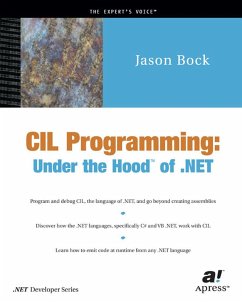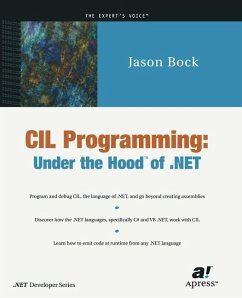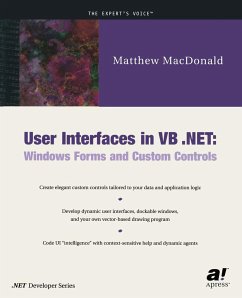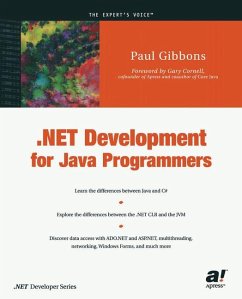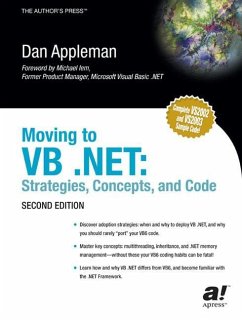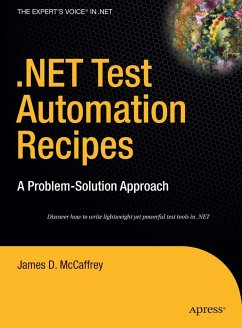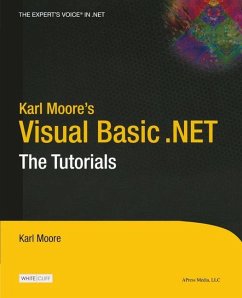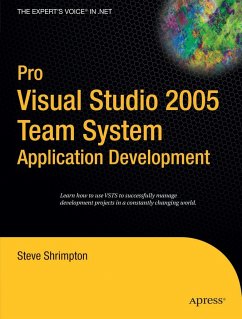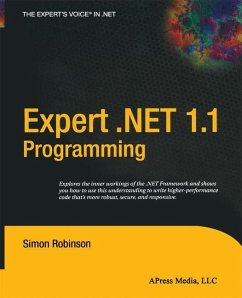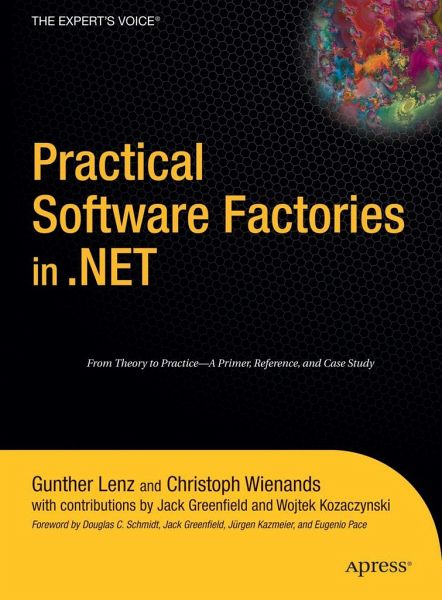
Practical Software Factories in .NET
Versandkostenfrei!
Versandfertig in über 4 Wochen
52,99 €
inkl. MwSt.
Weitere Ausgaben:

PAYBACK Punkte
26 °P sammeln!
For the first time, with this book, .NET developers and architects can see how to put new method to practical use in real projects. Every chapter is accompanied with hands-on examples performed on a real-world case study, using Microsoft's Software Factory tools. Software Factories are Microsoft's vision of the future of software development.
The promise of software factories is to streamline and automate software development, and thus to produce higher-quality software more efficiently. The key idea is to promote systematic reuse at all levels and exploit economies of scope, which translates into concrete savings in planning, development, and maintenance efforts. However, the theory behind software factories can be overwhelming, because it spans many disciplines of software development. On top of that, software factories typically require significant investments into reusable assets.
This book was written in order to demystify the software factories paradigm by guiding you through a practical case study, from the early conception phase of building a software factory to delivering a ready-made software product. The authors provide you with a hands-on example covering each of the four pillars of software factories: software product lines, architectural frameworks, model-driven development, and guidance in context.
While the ideas behind software factories are platform independent, the Microsoft .NET platform, together with recent technologies such as DSL Tools and the Smart Client Baseline Architecture Toolkit, makes an ideal foundation. A study shows the different facets and caveats and demonstrates how each of these technologies becomes part of a comprehensive factory. Software factories are a top candidate for revolutionizing software development. This book will give you a great starting point to understanding the concepts behind it and ultimately applying this knowledge to your own software projects.
Contributions by Jack Greenfield, Wojtek Kozaczynski
Foreword by Douglas C. Schmidt, Jack Greenfield, Jorgen Kazmeier and Eugenio Pace.
This book was written in order to demystify the software factories paradigm by guiding you through a practical case study, from the early conception phase of building a software factory to delivering a ready-made software product. The authors provide you with a hands-on example covering each of the four pillars of software factories: software product lines, architectural frameworks, model-driven development, and guidance in context.
While the ideas behind software factories are platform independent, the Microsoft .NET platform, together with recent technologies such as DSL Tools and the Smart Client Baseline Architecture Toolkit, makes an ideal foundation. A study shows the different facets and caveats and demonstrates how each of these technologies becomes part of a comprehensive factory. Software factories are a top candidate for revolutionizing software development. This book will give you a great starting point to understanding the concepts behind it and ultimately applying this knowledge to your own software projects.
Contributions by Jack Greenfield, Wojtek Kozaczynski
Foreword by Douglas C. Schmidt, Jack Greenfield, Jorgen Kazmeier and Eugenio Pace.





